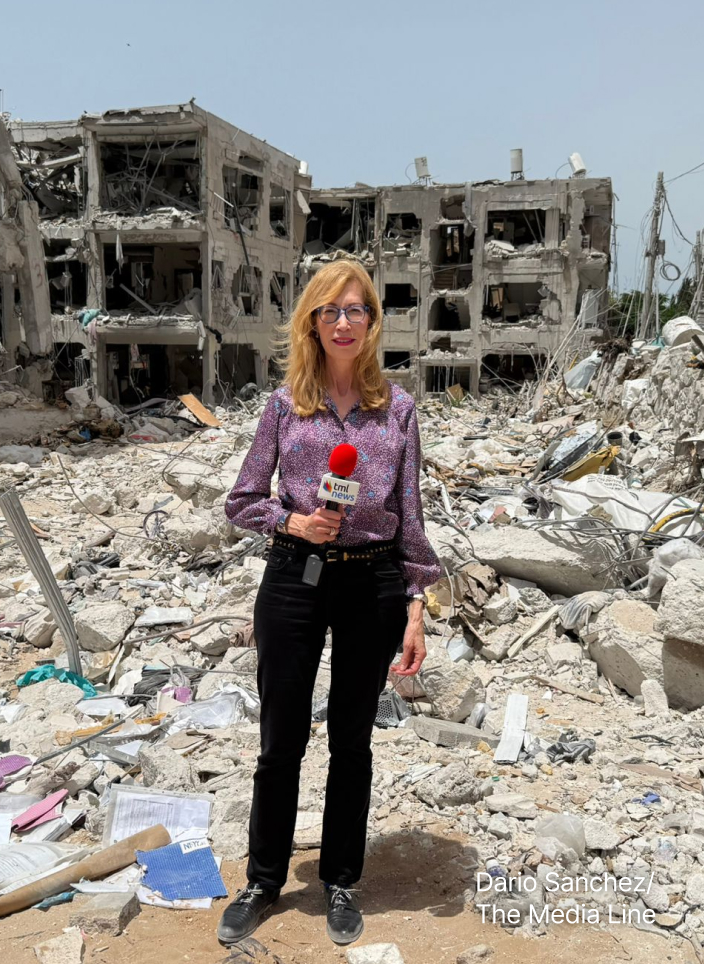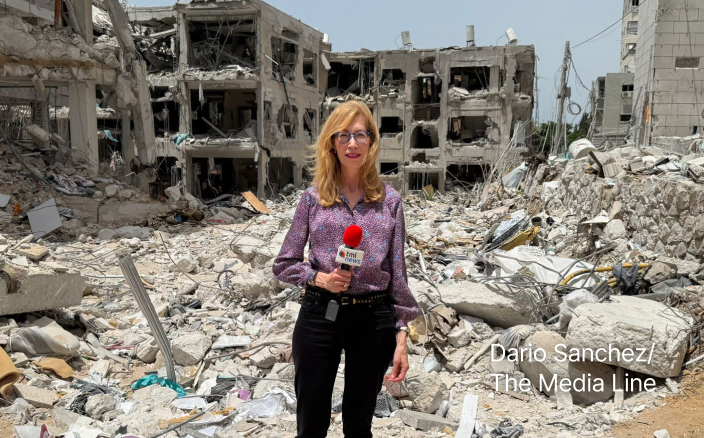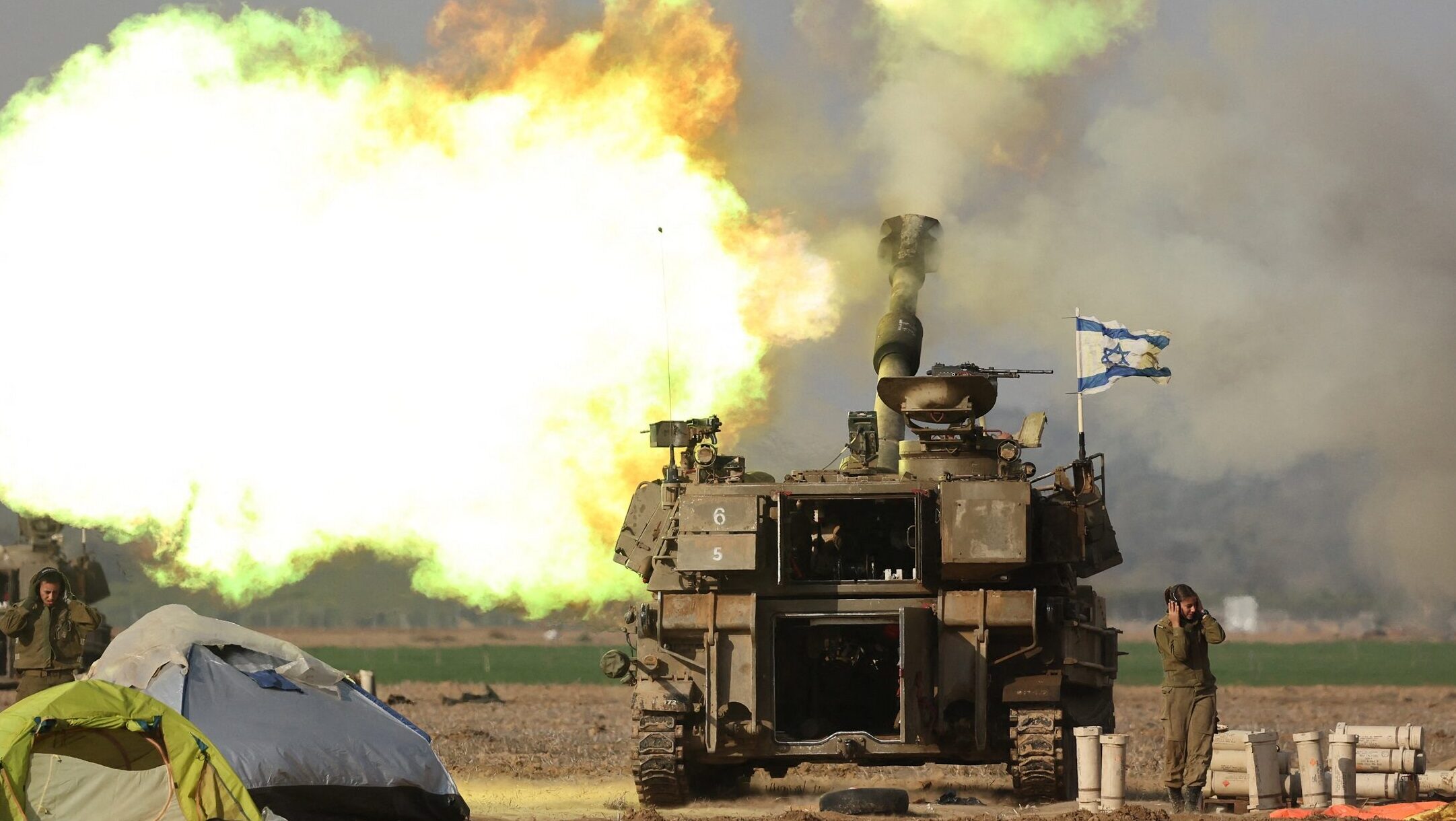‘Israel Is Still Far From Toppling Hamas’ in Tiny Gaza Strip, Palestinian Studies Expert Says
While Israel’s political echelon wants to portray Hamas as on the brink of collapse, experts say complex urban warfare will lengthen the war and make victory much less clear
The clock is ticking on Israel’s military operation against Hamas in the Gaza Strip, as it is unclear how much progress the Israel Defense Forces (IDF) has made in eliminating the terrorist organization. The ambitious goal was set out by the Israeli government in the immediate aftermath of Hamas’ surprise offensive on Oct. 7. According to Israeli officials, approximately 1,200 Israelis were killed in the attack and 251 people were abducted by Hamas on that day. So far, 114 of the hostages, some of them foreign nationals, have been released. The rest remain in Gaza, and the Israeli government has promised to secure their release.
According to the Hamas-run Health Ministry in the Gaza Strip, more than 18,000 Palestinians have been killed as a result of Israel’s retaliation on Gaza, with another 50,000 injured.
After over two months, there is increasing international pressure to end the war. Over the weekend, the US vetoed a UN Security Council resolution that called for an immediate cease-fire. While the Biden Administration has maintained that Israel will be the one to determine the end of the war, there have also been American insinuations that Israel’s credit is limited.
The IDF is now in a race against time to achieve its directive—stripping Hamas of its military capabilities and essentially removing it from power.
Israel is still far from toppling Hamas. The majority of its fighters are still alive; it still possesses rockets.
“We have seen extensive damage,” said Dr. Michael Milstein, head of the Palestinian Studies Forum at the Moshe Dayan Center for Middle Eastern and African Studies. “But Israel is still far from toppling Hamas. The majority of its fighters are still alive; it still possesses rockets.”
In addition, Milstein told The Media Line that the bombardment of government symbols, such as the parliament, courthouses, and mosques, is largely of symbolic value.
For Hamas, resistance is much more important than governance
“Hamas doesn’t need this to keep up its fight,” he added. “For Hamas, resistance is much more important than governance. As long as it has weapons and fighters, it doesn’t care whether it can govern Gaza or hand out humanitarian aid.”
This was proven already on Oct. 7, after many in the Israeli defense establishment thought Hamas was interested in solidifying its sovereignty over the Gaza Strip and would not risk an offensive against Israel that would endanger its rule.
While Hamas’ abilities are not comparable to the large and highly sophisticated IDF, the terrorist organization’s progress has been measured.
On Tuesday, battles continued to rage in the Gaza Strip.
Give the gift of hope
We practice what we preach:
accurate, fearless journalism. But we can't do it alone.
- On the ground in Gaza, Syria, Israel, Egypt, Pakistan, and more
- Our program trained more than 100 journalists
- Calling out fake news and reporting real facts
- On the ground in Gaza, Syria, Israel, Egypt, Pakistan, and more
- Our program trained more than 100 journalists
- Calling out fake news and reporting real facts
Join us.
Support The Media Line. Save democracy.


The territory is a densely populated enclave around 26 miles (41 kilometers) long and between 3 and 8 miles wide. According to the UN, 1.93 million Gaza residents have been displaced as a result of the fighting, approximately 85% of its little over 2 million population. Israeli towns, villages and kibbutzim surround the Gaza Strip’s northern and eastern borders—which total around 36 miles in length— in what is often referred to by Israelis as the “Gaza Envelope.” The Strip also has an 8-mile-long border with Egypt and 25 miles of Mediterranean coastline.
When the IDF began its ground operation in Gaza, it initially focused on northern Gaza, specifically on the towns of Beit Hanoun and Bureij, each with a few tens of thousands of residents. The military then made progress towards Gaza City, the de-facto capital of the territory, where there is a concentration of Hamas government and military buildings.
In addition to Hamas’ military capabilities above the ground, experts believe the terrorist organization has a wide web of underground tunnels in which its munitions are manufactured and stored. These tunnels are also where many of the hostages are believed to be held and Hamas’ military commanders are running the war. The challenges of urban warfare are multiplied in light of this.
After a temporary cease-fire collapsed on Dec. 1, the IDF also began its ground operation in the south of Gaza. The area is believed to be the hub of Hamas’ military infrastructure. It is also believed to be where most of the Israeli hostages are being held. Israel has also vowed to kill Hamas leader Yahya Sinwar, who is believed to be underground in the same area.
“This will be a very complex operation, which will require much more care and time and will likely cost more lives of Israeli soldiers,” said Professor Danny Orbach, a military historian from the Hebrew University of Jerusalem. “Israel is looking to cause the collapse of the Hamas governing mechanism,” he told The Media Line.
“The IDF method is to use massive airpower, then to encircle targeted areas, followed by increased incursions into territories as the hold over these territories gets stronger over time,” added Orbach, who noted that neither Israel nor Hamas focus their efforts on all areas equally. This creates pockets in which Israel has already gained control and other areas in which Hamas has focused its resistance, making it more difficult for the IDF.
On Monday, Israeli Defense Minister Yoav Gallant said Hamas was near “breaking point” in northern Gaza.
“There is a gap between what is being described by the political level as Hamas being on the verge of collapse, but the countdown to the end of Hamas is premature,” said Milstein. “Even after Sinwar will be assassinated, there will still be resistance.”
Both Gallant and Israeli Prime Minister Benjamin Netanyahu called on Hamas terrorists to “surrender or die.”
In recent days, footage emerged of Palestinians being detained by the Israeli military while wearing only underwear. It is unclear how many of the men were taken for further interrogation and how many were uninvolved civilians who were released. However, according to Orbach, pictures of such a surrender are one of the preliminary signs of Hamas’ collapse.
“Mass surrenders, the lack of ability to execute complex military operations, and chaos amongst the civilian population are all signs of collapse,” Orbach said. “As this progresses, the military operation becomes easier. We are at the beginning of this process.”
Over the weekend, the Israeli secret service released a video of its interrogation of former Hamas Communications Minister Yousef al-Mansi. “Sinwar and his gang have destroyed us,” said the former senior official. “We must get rid of them.”
Al-Mansi also estimated that the majority of Hamas’ military brigades have been eliminated. Hamas has not confirmed how many of its members have been killed by Israel since the beginning of the war. Israel said it has killed thousands of Hamas terrorists.
When a state begins to collapse, no one wants to stay standing last, eliciting a race of who surrenders or runs away first
“When a state begins to collapse, no one wants to stay standing last, eliciting a race of who surrenders or runs away first,” said Orbach. “Al-Mansi would not have sharply criticized Hamas’ leadership publicly if he did not think Israel was to remain an influential actor in Gaza after the war. He wants to portray himself as an alternative to the current leadership. Such an experienced member of the leadership that is beginning to smell defeat is another sign of collapse of the governing mechanism.”
Hamas has continued to fire rockets into Israel throughout the military operation, despite massive Israeli airstrikes and the presence of its troops in Gaza. While there has been a significant decrease in the amount of rocket fire, it is unclear how much firepower Hamas has left and whether it is using it selectively because its arsenal has been severely hit or holding on to it for future use.
As the military offensive continues, it is clear there is much headway to be made for Israel to reach its goal. While Hamas has controlled and governed Gaza since 2007, its ideology, which calls for the destruction of Israel, goes back decades and will live on even if Israel is successful.
“There are so many goals on the way,” said Milstein. “There is a lot of expectation in the Israeli public, but this will be a long and exhausting war. We will not see a mass surrender of Hamas, and there will not be a specific point in time in which Israel will be able to say it has reached its goal.”
With such a heavy price being paid by both sides, neither side will truly be victorious though both will surely strive to stake this claim.
The urban warfare in which both sides are now engaged makes for a very challenging battleground, which is often murky. With little symmetry between the sides, it is difficult to calculate the wins and the losses.
“Often in the Israeli-Palestinian conflict, both sides think they won,” said Orbach. “In this war, which is more like a street fight, it will be difficult to say who won and who lost.”

